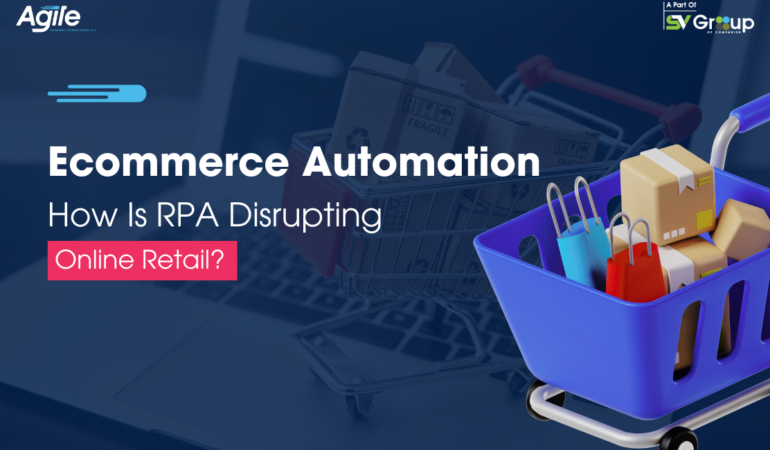How Is RPA Disrupting Online Retail – A Customer Perspective

The online retail sector is characterised by high competition, and companies are turning to technology to differentiate themselves. Automation or robotic process automation (RPA) is a valuable way to streamline operations and address the challenges associated with online retail. This article sheds light on how embracing RPA can benefit online retail customers.
Benefits of RPA in Online Retail
If customers wish to buy anything online, they go to Google or any other search engine. They enter the relevant search phrase and hit enter. In milliseconds, customers come across thousands of websites from where they can buy the relevant product. With so many options available, customers are more demanding than ever.
They will only buy from your store if you offer them an exceptional shopping experience. Of course, the product quality is equally important. RPA can help provide a more streamlined shopping experience. Let’s look at how RPA can help a retail business from the customer’s perspective.
- Order Status Updates
Customers expect regular status updates for their orders. It is the bare minimum that customers expect nowadays. However, given online retailers process thousands of orders daily, it can be challenging to provide updates to every customer. This is where RPA can prove highly useful in this area. The RPA bots can be programmed to provide real-time status updates to their customers. By automating this process, you can assign your workers to more value-added tasks that create value for the business.
- Automated Support
We believe the human touch is critical to customer support. Everyone has felt frustrated while talking to a chatbot because it may not understand the context. A bad experience can lead a customer to switch to your competitor or leave a negative review. Unfortunately, employing humans to handle customer queries is not feasible. Imagine the resources you’ll need to employ. The costs are too high for any business. With RPA, you can program a bot to handle easy and straightforward queries. Only complex questions will be forwarded to the customer service agent. It reduces the long wait times for customers waiting to talk to an agent.
- Review Management
Research indicates that a potential customer will likely read online reviews before purchasing. RPA can be implemented for review management. The bot can categorise reviews based on positive, negative, or other categories. After categorisation, it can follow up with pre-programmed responses. For instance, the bot can provide a discount whenever a customer leaves a positive review. In case of a negative review, the bot can forward it to the customer service department. They can decide how to soothe the customer.
- Returns Processing
Most customers complain about a poor returns process as the top reason they won’t buy from an online store again. A defective product or change of mind is part of running any business. Therefore, retailers must not worry about this but about the return process. They must ensure the return process is streamlined.
Again, if a retailer does it manually, it can be considerably time-consuming and resource-intensive. RPA effectively handles returns and associated processes such as inventory management. The RPA bot can keep the customer informed about the return process, update the inventory, and make necessary adjustments to the company’s finances.
- Loyalty Management
In any business, the real challenge is not attracting customers but retaining them. In the retail industry, retaining customers becomes an even more significant challenge due to the high competition. RPA can be utilised for loyalty management. Based on the customers’ data, it can categorise them into sub-groups. For example, it can categorise them based on order volume or value. It can then send personalised messages to invoke loyalty.
Conclusion
With customers becoming more demanding, it is imperative that online retailers employ technology to manage their expectations better. RPA is a revolutionary technology which can automate processes for a more streamlined customer experience. As the discussion shows, RPA can address numerous customer pain points.

Leave A Comment